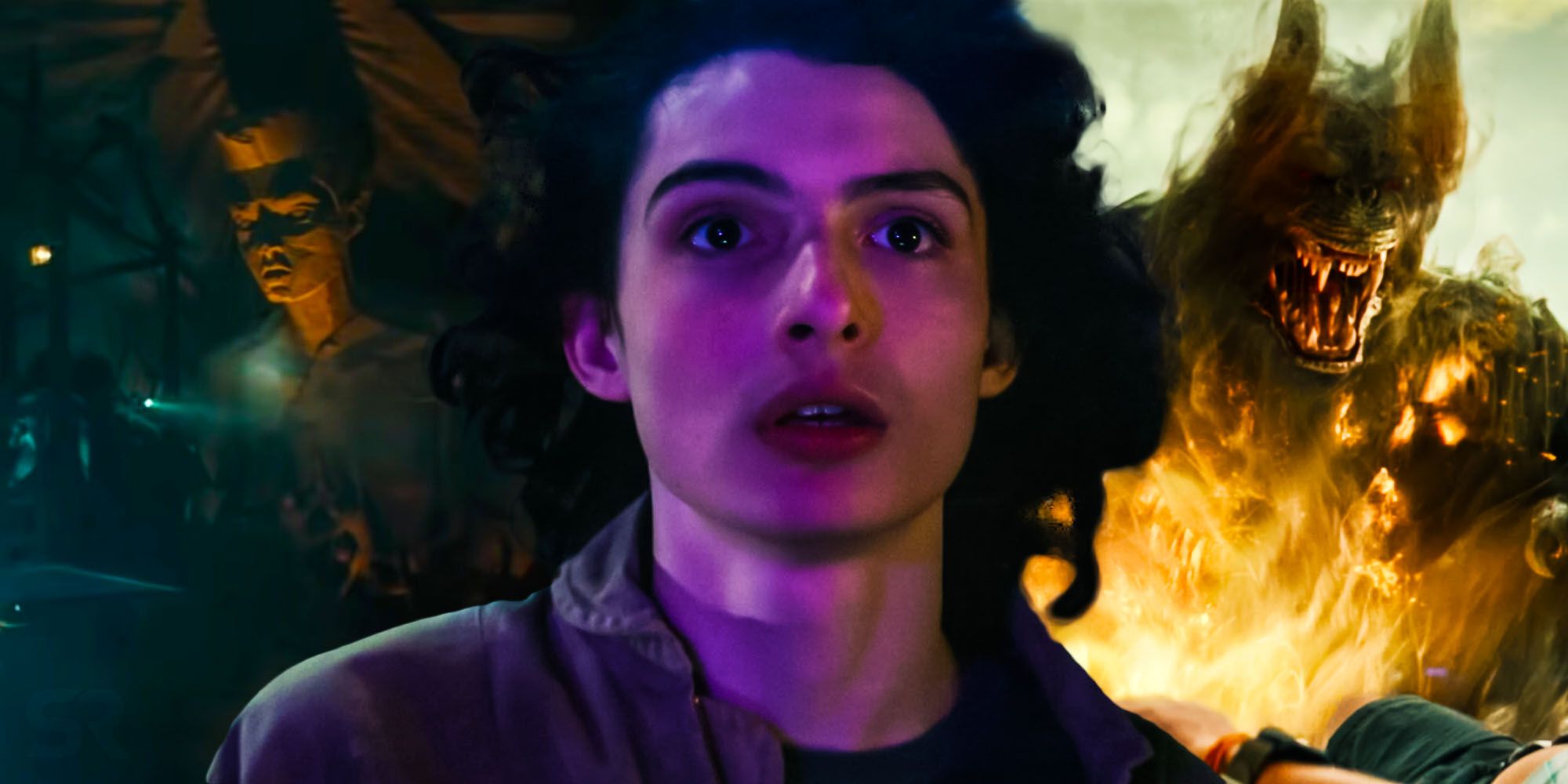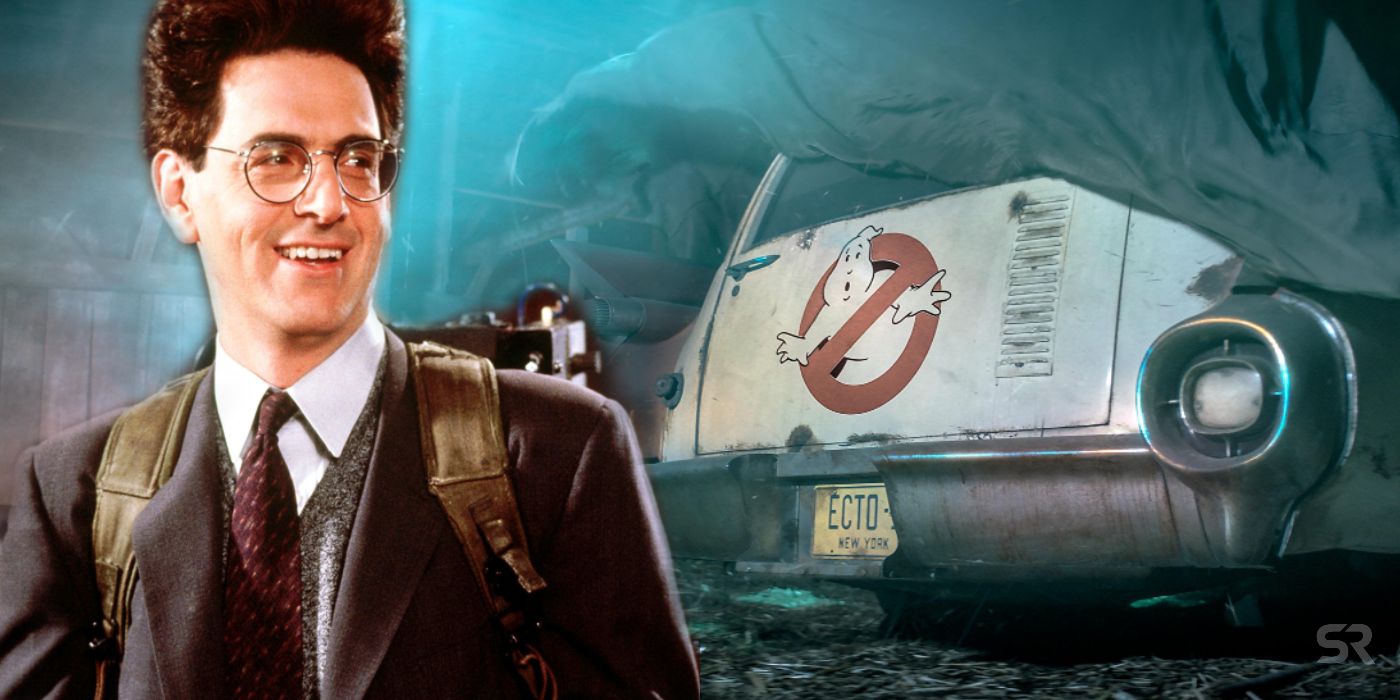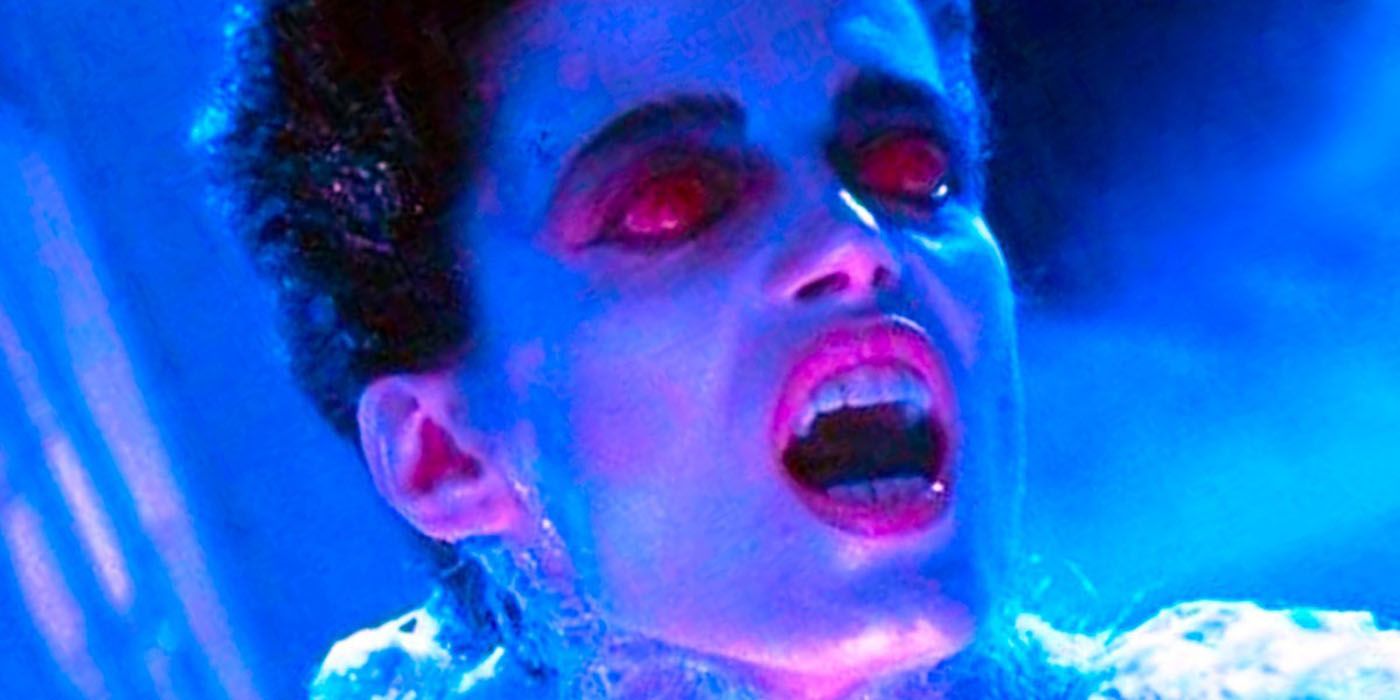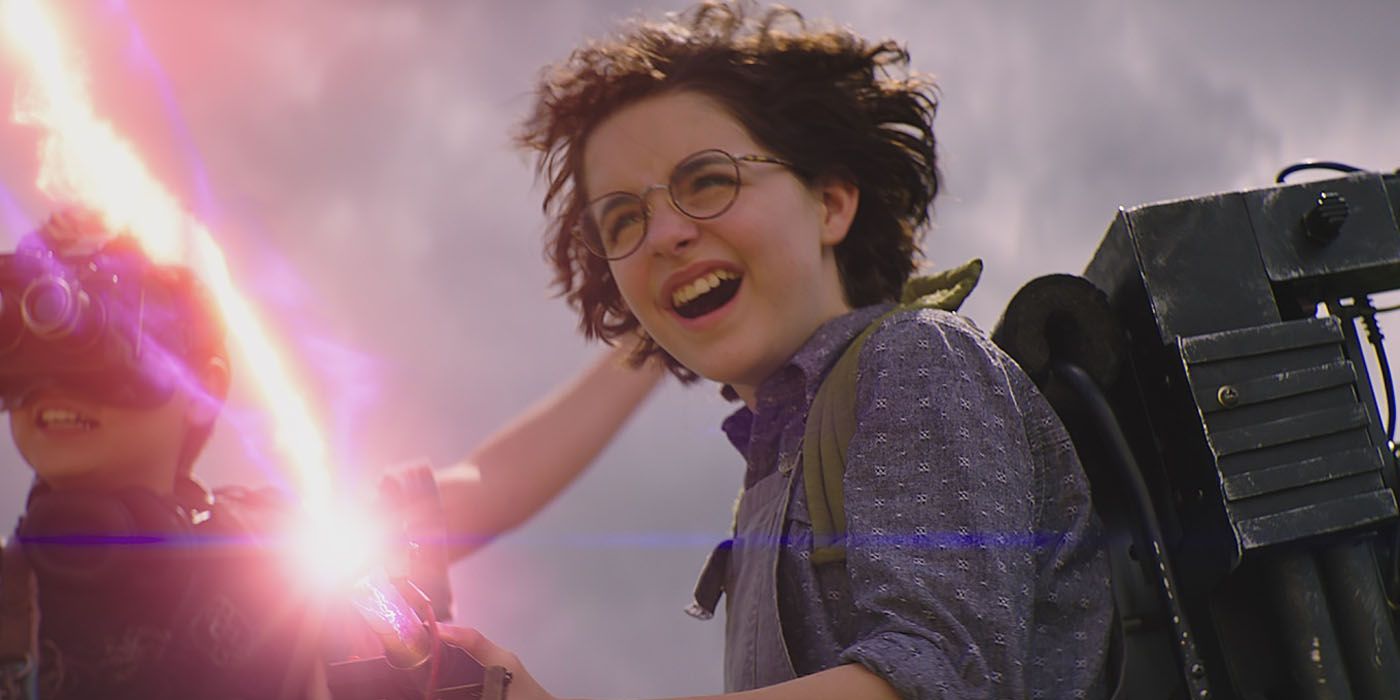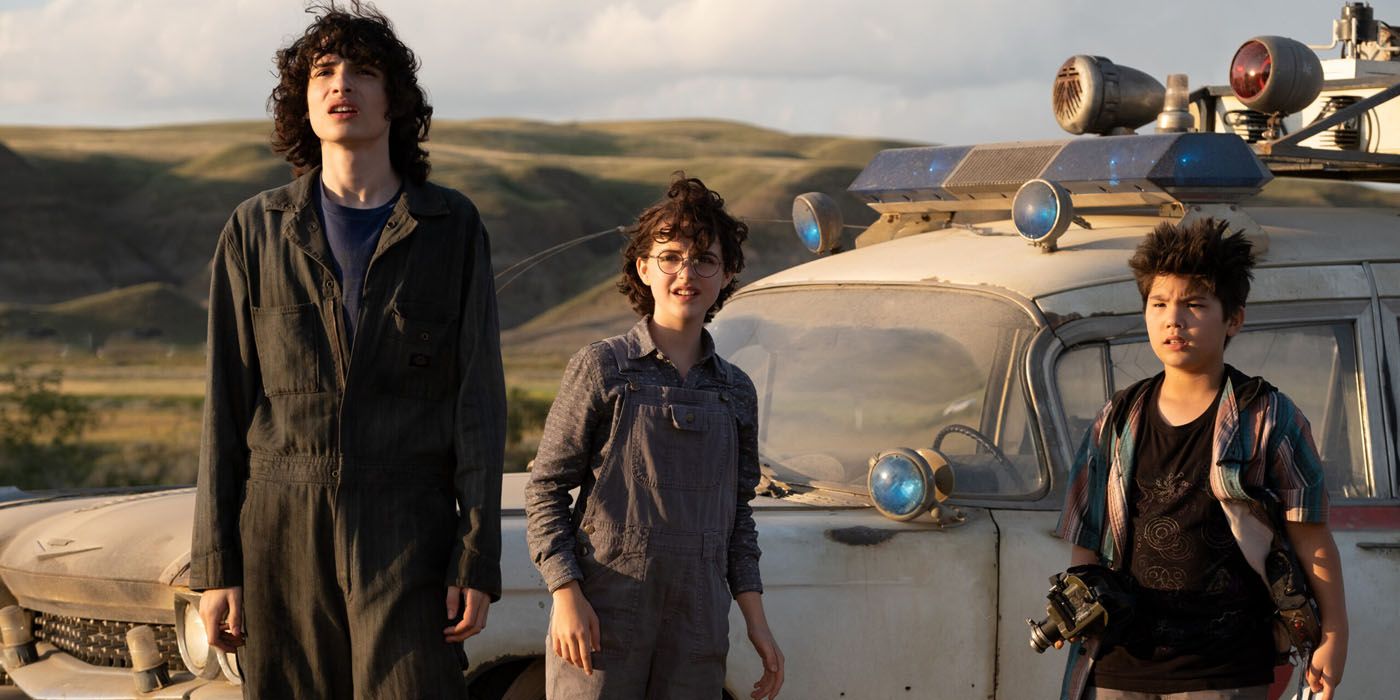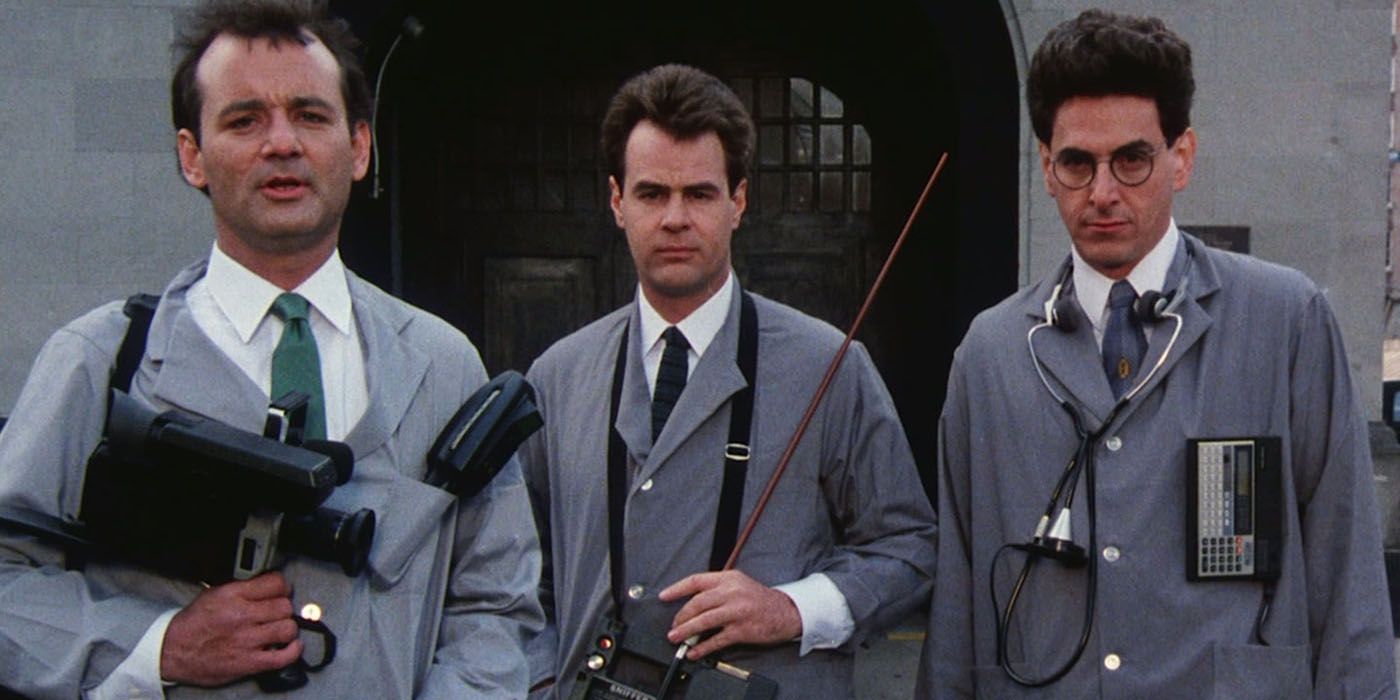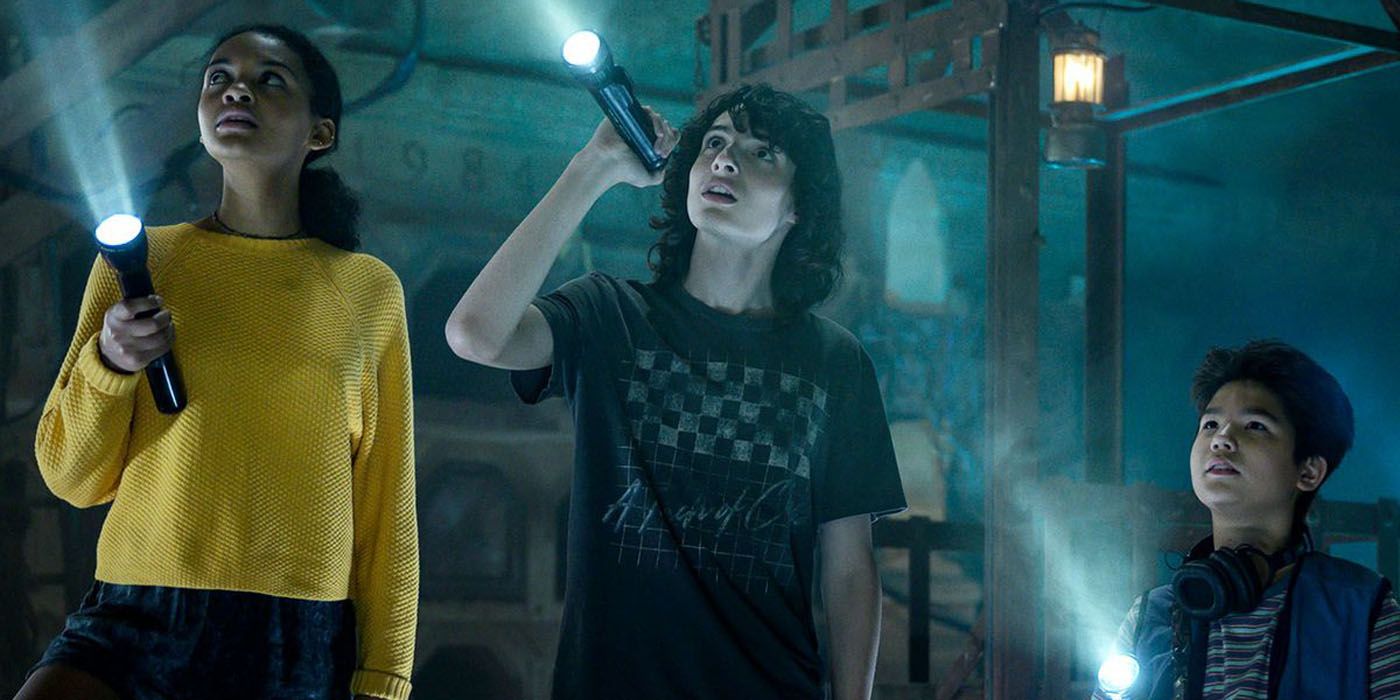Warning: This post contains major spoilers for Ghostbusters: Afterlife.
Ghostbusters: Afterlife ending and all hidden meanings explained. The third installment in the Ghostbusters franchise — not counting the 2016 reboot — is directed by Jason Reitman from a screenplay by him and Gil Kenan. The sequel brings back the original ghostbusters as it shifts the story toward the next generation, including Egon Spengler’s grandchildren.
Ghostbusters: Afterlife follows Callie Spengler (Carrie Coon) and her children, Phoebe (McKenna Grace) and Trevor (Finn Wolfhard), as they move to Summerville, Oklahoma following the death of Callie’s father Egon, a scientist who was one of four original ghostbusters in the 1980s. The sequel also recruits Paul Rudd’s Gary Grooberson, a seismologist investigating the strange quakes in Summerville, to help them figure out what’s really going on and why Egon disappeared from society to move to the remote town to live on a dirt farm.
The Ghostbusters sequel ends by bringing back Egon (in ghost form) and defeating Gozer once more before the being could do any major harm. Of course, Ghostbusters: Afterlife also introduces a long-held prophecy, tying the plot back to the 1984 film in a major way. Here’s how the film sets up a potential sequel that would get its jump-start following the events of Ghostbusters: Afterlife, the story’s hidden meanings, how it relates back to an offscreen feud, and more.
How Egon Returns (& How It Was Filmed)
The majority of Ghostbusters: Afterlife hinges on the connection between the deceased Egon and his family, who arrive in Summerville believing he’d left them with nothing but a tattered home and a bad reputation in town. Egon’s death is shown at the start of the film, but he returns in the story’s finale, appearing as a ghost on the property of his dirt farm to assist Phoebe as she blasts the proton pack at Gozer. The end of Ghostbusters: Afterlife isn’t the only time he appeared, however, with Egon’s spirit essentially guiding his family to the information he left behind. However, he shows up in ghost form to see his years-long work come to fruition. One might call helping his family and getting rid of Gozer was Egon’s unfinished business. His ghost likely materialized because he had to complete this mission before moving on.
Helping Phoebe and his friends defeat Gozer one last time was what he needed to do before dissipating, and it’s likely he was able to return because of his connection to his loved ones and to his land. Harold Ramis passed away in 2014, so how did director Jason Reitman bring him back for Ghostbusters: Afterlife? Ramis’ posthumous return as Egon happened with the assistance of visual effects and (most likely) the use of archival footage from the original ghostbusters, replicating him so he could be in the final moments of the 2021 film. In interviews, Reitman has yet to give a straightforward answer regarding how Egon’s return was filmed, but there were visual effects and perhaps some CGI involved.
Is Gozer Gone Forever?
There’s always a chance for Gozer to return, especially considering the fact that the mountainous temple in Oklahoma suggests there will be another year when the villain could make a comeback. The years engraved on the wall underground reveal a countdown — 1945, 1984, 2021. Gozer seems primed for a reappearance every 30+ years. Tectonic shifts and general devastation in the seismic energy always precedes their arrival. Since Gozer was brought back a second time around in the Ghostbusters universe, there’s indeed a chance the otherworldly being could pop back in for another apocalyptic attempt in the future. The prophecy that foretells Gozer’s arrival is, after all, thousands of years old, so it seems like only a matter of time at this point before the villain returns to wreak more havoc. If someone like Ivo Shandor is passionate enough about ensuring the prophecy comes true, then Gozer could return to another place and time. This time, however, the ghostbusters will be more than ready to take on the villain.
Ghostbusters: Afterlife's Ending Explains The Movie's Title
Egon returns as a ghost in Ghostbusters: Afterlife, aiding Phoebe and his friends in the defeat of Gozer — thanks primarily to his dirt farm trap that stopped the villain from furthering any nefarious plans. The original ghostbuster’s return speaks to the film’s title, which alludes to a life after death and is apt considering the job Egon had before his demise. However, the movie’s title is also connected with Gozer and Ivo Shandor as well, both of whom came back to life after presumably dying decades earlier. Life in the Ghostbusters universe is all about cycles and Afterlife saw this aspect of the story emerge on more than one occasion. A prominent theme in the film is that nothing ever truly dies, and can come back in different iterations — be it as a ghost, resurrected friendships, and second chances to reconnect and gain closure.
For Callie, that was reuniting with Egon briefly before his ghost dissipated, getting another opportunity to live a life free of its previous emotional restraints. Egon’s death left a lot of relationships in tatters, including the one he had with his friends. His return as a ghost, however briefly, restored some of the love that had been lost between Egon and his friends and family; it also inspired them to pursue some of the things he had left behind. What’s more, Ghostbusters: Afterlife’s title doesn’t just pertain to the elements of the plot, but the longevity of the franchise itself. The sequel gives the Ghostbusters franchise a new lease on life as the torch is passed down from one generation to another. The ghostbusters live on in another form, with Phoebe and Podcast taking the lead to breathe new life into the business that essentially died years prior to the events of the film.
Ghostbusters: Afterlife Ties Together The Franchise's Entire Story
Ghostbusters: Afterlife goes all in on the apocalypse details. By bringing back Gozer, the sequel makes the events of the 1984 Ghostbusters a part of a larger, world-ending plan rather than just a one-off oddity that happened in New York. The sequel also finds a way to include Ivo Shandor, the architect behind the Manhattan building Gozer appeared in for the first time. By having the characters, old and new, finish what Egon started, Ghostbusters: Afterlife’s plot ties neatly into the first film and with the franchise as a whole.
Ghostbusters: Afterlife's Hidden Meaning Ends A BTS Feud
Although the pair starred together in Ghostbusters and collaborated on other films like Groundhog Day, Bill Murray and Harold Ramis didn't speak to each other for 20 years. Their falling out happened during the filming of Groundhog Day, much of which was attributed to Murray's strained marriage with wife Margaret Kelly (they would later divorce) and his acting out on the set of the film, taking out a lot of his anger on Ramis. While Murray and Ramis reconciled before the latter's death in 2014, the ending of Ghostbusters: Afterlife sees their characters also reunite in a bittersweet way.
The film mirrors some of the tension between them in real-life and, although Murray’s Peter Venkman didn’t reconcile with Ramis’ Egon in life, Ghostbusters: Afterlife closes the circle on their partnership in a meaningful and poignant way. This exploration of differences and conflict — an issue that was present with the original ghostbusters team in Afterlife, which led to them not speaking to Egon — reiterates that friendship is too important to let such issues affect it to the point of abandonment.
Afterlife Sets Up Ghostbusters 4 Being A Proper Sequel
Ghostbusters: Afterlife introduces characters and certain plot elements that set up a sequel that could pickup directly after its ending. Not only does the film introduce a handful of new characters that could carry on the legacy of the original ghostbusters, but Phoebe, Podcast, Trevor, and Lucky could band together to hunt even more ghosts or research more about Gozer and the apocalypse in a bid to prevent something from happening again in the future. In short, all of the new characters introduced in Ghostbusters: Afterlife could return in Ghostbusters 4 to continue the story. It would be the first time in a long time that a story was more intrinsically tied to a previous film in the franchise.
What's more, Ghostbusters: Afterlife’s post-credits scene sets up a lot of potential for even more characters to join a potential sequel. The Ghostbusters car (aka, the Ecto-1) is shown being driven back to New York, where Winston Zeddemore presumably bought the old firehouse the original Ghostbusters operated out of in the 1980s. As a wealthy businessman, Winston could recruit Phoebe, Podcast, and a plethora of other kids to carry on the legacy of the ghostbusters. It's possible this new endeavor will attract anyone who is interested in ghosts, science in general, and the happenings from 1984 to carry on the torch and start fresh.

